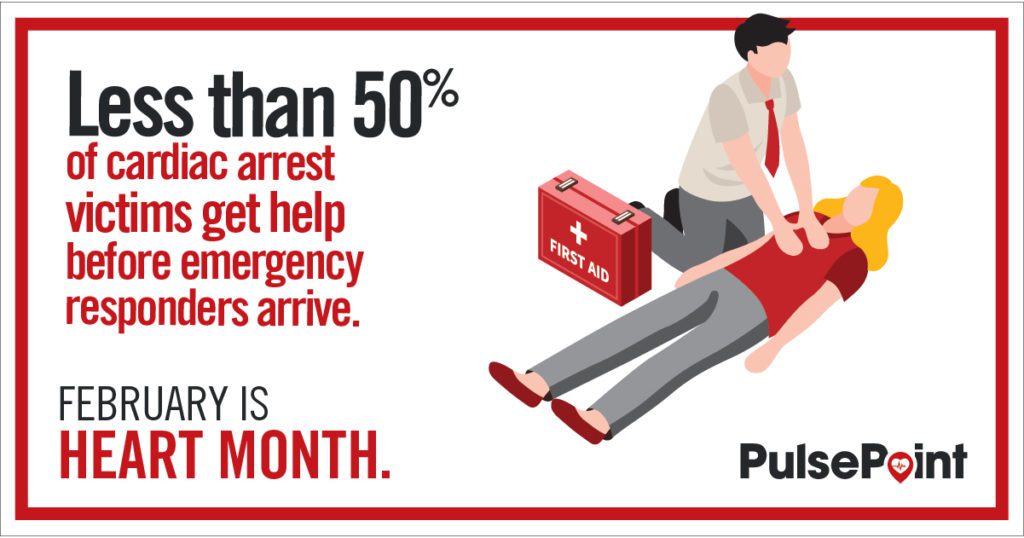

Knowing how to perform hands-only CPR (without breaths) can save a life. Even during the COVID-19 pandemic, you should know the risk of infection is low. According to the Seattle Fire Department Medical Director, Dr. Michael Sayre, “performing Hands-Only CPR is essential to help buy precious time for help to arrive. Even if the victim has a contagious disease (and few victims of sudden collapse are contagious), your risk of catching anything is quite low since you are not giving mouth-to-mouth breaths.”
Around 70% of out-of-hospital cardiac arrests happen at home so you’re more likely to perform hands-only CPR on someone you know. A cardiac patient’s chance of becoming a long-term survivor are more than doubled if a someone on the scene administers prompt CPR.
Administering hands-only CPR is a simple technique that only takes a few minutes to learn. Watch this short video to learn the steps for performing hands-only CPR – you could save a life.
Download the PulsePoint App
We partnered with PulsePoint, a free mobile app used to alert Seattle residents when a person is suffering from sudden cardiac arrest in their immediate vicinity. We encourage you to learn CPR and download the PulsePoint App onto your mobile phone.
If you see someone collapse, follow these steps:
- Call 911 – Give specific information to the dispatcher, starting with the location. Is an AED available? If so, send someone to retrieve it and use it as soon as you can.
- Make sure the scene is safe
- Quickly determine if the person needs CPR – If the person is not responsive or not breathing normally – tap them on the shoulder and shout, “Are you ok. Are you ok?” If the person doesn’t move, speak, blink, or otherwise react, then he or she is not responding.
- Begin Chest Compressions – Use two hands, with straight arms, and push down hard and fast in the center of the chest. Make sure compressions are at least 2-inches deep, and are at the rate of 100 to 120 compressions per minute.
- Don’t stop compressions until help arrives or take turns with someone if you get tired
More CPR/AED Resources:
- CPR/AED Video in English
- Hands-only CPR handout in 15 languages
- CPR resources in many languages
- Hands-only CPR video from the American Heart Association in English (in Spanish)
- For a fun CPR video/dance party check out this video
- Learn about and download the PulsePoint app and how it alerts community members when CPR is needed in real-time